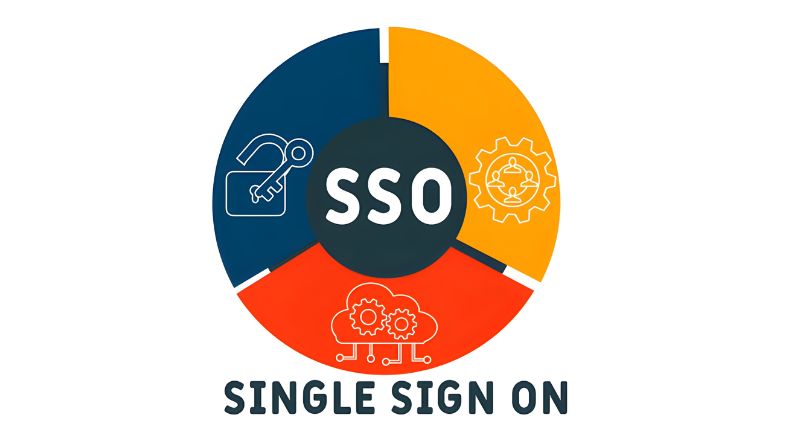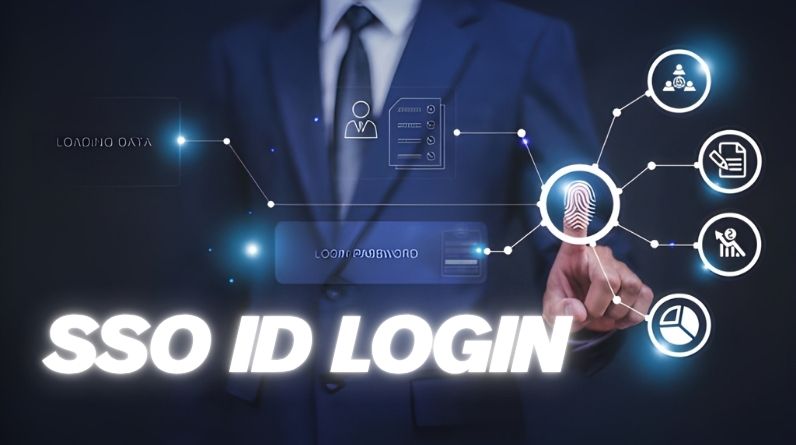Introduction: Breaking Free from Password Chaos
Imagine logging in once in the morning and seamlessly accessing your email, project management tools, financial software, and collaboration platforms without entering a password again. This is not a fantasy—it’s the reality of Single Sign-On (SSO) technology that’s revolutionizing how organizations manage user authentication.
For decades, employees have struggled with the “password burden.” A typical corporate worker manages an average of 100+ passwords across different applications. This leads to weak passwords, credential reuse, and the inevitable cycle of forgotten passwords and help desk calls. SSO ID login breaks this exhausting pattern by allowing users to authenticate once and gain access to multiple connected applications automatically.
But here’s the paradox: while SSO dramatically improves user experience and reduces IT overhead, it also introduces new security challenges that organizations must carefully manage. Understanding both sides of this equation is crucial for making informed decisions about authentication infrastructure.
What Is Single Sign-On (SSO) ID Login?
Single Sign-On (SSO) is an authentication method that enables users to log in once with a single set of credentials and gain automatic access to multiple applications and websites without needing to authenticate again during the same session.
Think of it like a master key system. Instead of carrying separate keys for your office, home, car, and gym locker, you carry one master key that unlocks them all. Similarly, SSO creates a centralized authentication system that eliminates the need for multiple usernames and passwords.
Real-World Example
When you log in to your Google account, you automatically gain access to Gmail, Google Drive, YouTube, and Google Photos without logging in separately to each service. This seamless experience is powered by SSO technology.
How Does SSO ID Login Work? A Technical Deep Dive
The Three Key Players
- User: The person requesting access to an application
- Service Provider (SP): The application or website the user wants to access
- Identity Provider (IdP): The centralized system that authenticates users and maintains their identity information
The Step-by-Step Process
- Access Request: User attempts to access a protected application (Service Provider)
- Credential Check: The Service Provider checks if the user is already authenticated with the Identity Provider
- Authentication Redirect: If not authenticated, the user is redirected to the Identity Provider’s login page
- Credential Validation: The user enters their username and password, which the IdP validates
- Token Generation: Upon successful validation, the IdP generates a security token (usually stored as a secure cookie)
- Redirection Back: The user is redirected back to the original application with the authentication token
- Token Verification: The Service Provider validates the token’s authenticity
- Access Granted: The user gains access to the application without needing to log in again
SSO Protocols: The Language of Authentication
SSO systems rely on standardized protocols to communicate and verify user identities. Understanding these protocols helps organizations choose the right solution for their needs.
| Protocol | Primary Use | Key Feature |
|---|---|---|
| SAML 2.0 | Enterprise environments | Uses XML to exchange authentication and authorization data |
| OAuth 2.0 | Web and mobile applications | Enables third-party service access without exposing passwords |
| OpenID Connect (OIDC) | API-based authentication | Identity layer built on OAuth 2.0 for modern applications |
| Kerberos | Network authentication | Secret-key cryptography with ticket-granting system |
The Business Impact: Why Organizations Are Adopting SSO
Increased Productivity and Employee Satisfaction
Employees waste an estimated 11 hours per year dealing with password-related issues. By implementing SSO, organizations eliminate this productivity drain. Users spend less time resetting passwords and more time on meaningful work. This translates directly to improved bottom-line metrics and employee satisfaction.
Reduced IT Support Burden
Help desk teams report that password reset requests account for 20-30% of all support tickets. SSO dramatically reduces this burden, allowing IT professionals to focus on strategic initiatives rather than reactive password management.
Enhanced Security Posture
Contrary to popular belief, SSO actually strengthens security when implemented properly. It encourages users to adopt stronger, more complex passwords because they only need to remember one. It also centralizes authentication, making it easier for organizations to enforce multi-factor authentication (MFA) and implement consistent security policies.
Improved Compliance and Auditing
Centralized authentication provides comprehensive logging capabilities. Organizations can track all authentication events, user access patterns, and potential security anomalies in one place. This significantly simplifies compliance with regulations like GDPR, HIPAA, and SOC 2.
SSO Security Considerations: The Hidden Risks
While SSO offers tremendous benefits, it introduces legitimate security challenges that require careful attention.
The Single Point of Failure Problem
SSO consolidates access across multiple applications. If an attacker compromises SSO credentials, they gain access to the entire ecosystem. However, this risk is manageable through proper implementation of multi-factor authentication and adaptive authentication policies.
Common Security Risks
- Credential Theft: Phishing campaigns targeting SSO credentials can be highly effective
- Token Hijacking: Attackers may intercept authentication tokens through cross-site scripting or malware
- Session Hijacking: Active sessions can be compromised if security controls are weak
- Configuration Errors: Improper SSO setup can create unintended vulnerabilities
- Supply Chain Risks: Breaches at SSO vendors can affect all customers
Mitigation Strategies
Organizations should implement:
- Multi-factor authentication (MFA) or two-factor authentication (2FA)
- Adaptive authentication based on risk profiles
- Regular security audits and configuration reviews
- Strong endpoint security measures
- Session timeout policies
- Encrypted token transmission
Implementing SSO: A Practical Guide

Step 1: Define Your Goals and Requirements
Before implementation, answer these critical questions:
- Which applications need to be integrated?
- What is your target user base (employees, customers, partners)?
- What compliance requirements must you meet?
- Do you prefer cloud-based or on-premises solutions?
- What is your budget and timeline?
Step 2: Choose the Right Authentication Protocol
Select based on your environment:
- SAML: Best for enterprises with traditional applications
- OAuth 2.0: Ideal for web and mobile applications
- OIDC: Preferred for modern, API-driven architectures
Step 3: Select an Identity Provider
Leading SSO providers include Okta, OneLogin, Microsoft Azure AD, Ping Identity, and Auth0. Evaluate based on:
- Integration capabilities with your existing applications
- Security features and certifications
- User management capabilities
- Pricing model and total cost of ownership
- Vendor support and documentation
Step 4: Configure Integrations and Test
Establish trust relationships between your IdP and Service Providers. Conduct thorough testing across all integrated applications before full deployment.
Step 5: Deploy and Monitor
Roll out SSO to your user base with clear onboarding instructions. Continuously monitor authentication events, security logs, and user feedback.
SSO Configuration Types: Choosing Your Approach
Cloud-Based SSO
Hosted by providers like Okta or Azure AD. Ideal for organizations with diverse cloud applications and distributed workforces.
Enterprise SSO
Client-server architecture for organizations with legacy applications. Provides deep integration with existing infrastructure.
Social SSO
Users authenticate using social media accounts (Google, Facebook, LinkedIn). Useful for consumer-facing applications but requires careful security consideration.
Mobile SSO
Incorporates biometric authentication and device-based authentication for mobile applications.
The Future of SSO: What’s Next?
The authentication landscape is rapidly evolving. Passwordless authentication, Zero Trust Architecture, and AI-driven adaptive authentication represent the next frontier. Organizations implementing modern SSO platforms today are positioning themselves to adopt these technologies seamlessly in the future.
Conclusion: Strategic Authentication for the Modern Enterprise
SSO ID login has transformed from a nice-to-have feature into a critical infrastructure component for modern organizations. When implemented thoughtfully, it simultaneously improves user experience, reduces IT costs, enhances security, and simplifies compliance.
The key to successful SSO adoption is understanding both its tremendous benefits and its legitimate security considerations. Organizations that take a balanced, strategic approach—combining strong authentication protocols with robust security controls—will find SSO to be a powerful investment in their identity and access management infrastructure.
Whether you’re a small business looking to streamline authentication or an enterprise managing thousands of users, SSO technology offers a path toward simpler, more secure identity management. The question is no longer whether to implement SSO, but how to implement it effectively.



